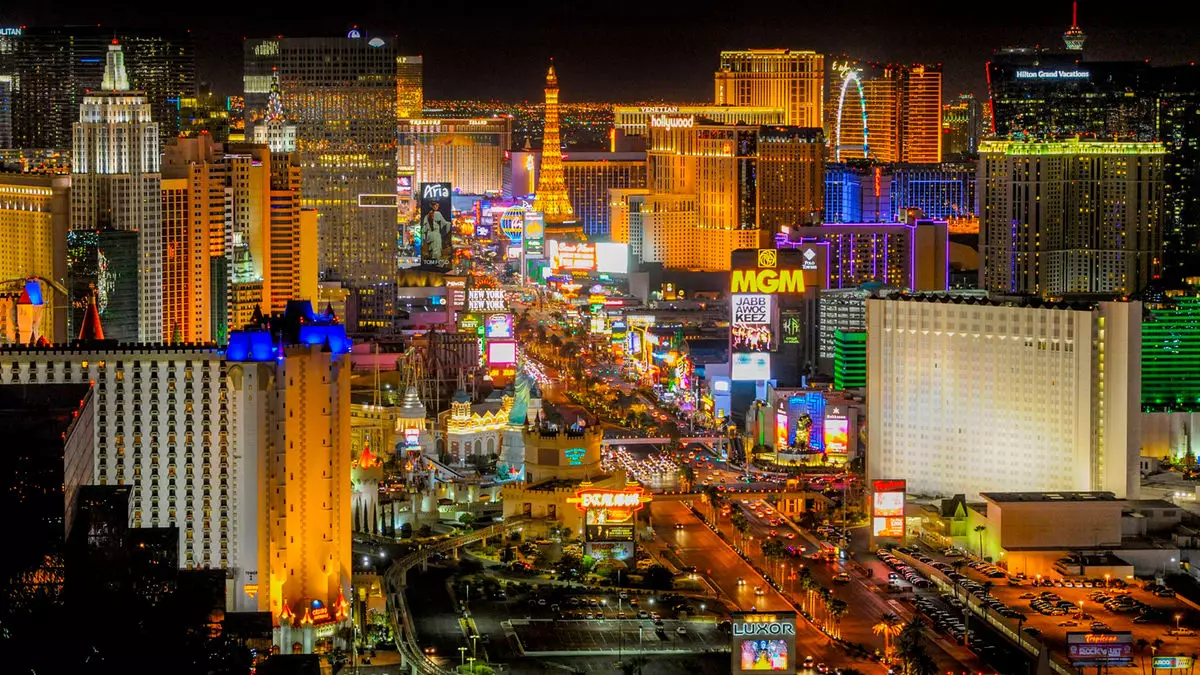Las Vegas has long been considered a resilient titan of the tourism industry, but recent statistics reveal a challenging landscape for the city. Visitation in March 2025 dropped by 7.8% compared to the same month in 2024, marking the third consecutive month of decline. This downturn in tourism does not exist in isolation; it correlates with an 11.9% decrease in February, which was masked by the festivities surrounding the Super Bowl, where an influx of visitors temporarily lifted attendance. A mundane January showed only a slight slide of 1.1%, but these figures together highlight a troubling pattern reminiscent of the downturn experienced during the pandemic. The Las Vegas Convention and Visitors Authority (LVCVA) noted that the city welcomed approximately 3.4 million visitors in March, a figure that seems spectacular until it is juxtaposed against the backdrop of previous years.
The current figures hint at deeper issues beyond mere numbers. The challenges are exacerbated by an event calendar lacking in significant attractions and the cautious atmosphere pervading both domestic and international markets. As outlined by Kevin Bagger, the director of the LVCVA Research Center, the effects of evolving federal policies have further complicated matters, creating an uncertain environment for potential travelers. It raises questions about whether attendees are responding to broader geopolitical tensions and domestic policy shifts when planning their trips.
Segmented Shifts in Tourism Patterns
Interestingly, while overall visitation figures may be discouraging, there are noteworthy pockets of growth within the tourism landscape. Convention attendance, for example, rose by 10.2%, reaching a total of 533,900 attendees in March. A significant contributor to this uptick was the Healthcare Information & Management Systems Society conference, indicating that certain industry-specific events can provide a lifeline to the local economy. This scenario presents a dual narrative: while general tourism falters, niche markets continue to thrive.
Moreover, the average daily rate for hotel rooms saw a modest increase of 3.1%, now averaging around $183.86, illustrating that while occupancy levels may be sliding, visitors are still willing to spend more on accommodation. The dynamics at play here are complex. The increase in average daily room rates reflects a potential strategy by hotel operators to capitalize on perceived value, even amidst declining visitor numbers.
Impending Economic Constraints
The dip in traveler numbers has wide-ranging financial implications for the Las Vegas economy. The LVCVA has already projected a 5% decline in room tax revenue for the upcoming budget, translating to a loss of around $18 million. This projection takes on greater significance given that the authority had initially anticipated revenue of approximately $360 million from room taxes for the fiscal year ending June 30. LVCVA president Steve Hill categorized this estimate as a „conservative approach,“ and while he stressed that a single month’s decline cannot fully dictate trends, there is surely merit in his caution.
The ramifications extend beyond hotel taxation; they risk impacting the city’s vibrant hospitality sector, local entertainment, and myriad other businesses that thrive on tourist patronage. Jeremy Aguero, a principal analyst with Applied Analysis, has pointed to waning foreign travel—particularly from Canada and Mexico—as key contributors to this unpredictable situation. The segment’s notable decrease, amidst politically charged climates between nations, is a potent reminder of how external factors can handicap an economy reliant on cross-border tourism.
Looking Ahead: Strategies for Recovery
As Las Vegas grapples with these alarming trends, it calls for a re-evaluation of strategies to bolster tourism. Reinvigorating the city’s appeal will not be a simple endeavor; it necessitates a grassroots commitment to understanding emerging traveler demands, innovating its event calendar, and creating an inviting atmosphere for all visitors.
A holistic approach should embrace partnerships with industries that can drive new attractions or events, contribute to sustainability efforts, and engage in proactive community outreach. By focusing on improving consumer confidence and altering perceptions, Las Vegas has the potential to reinstate itself as a premier travel destination. Although the current setbacks are disheartening, this historical powerhouse has triumphed through more tumultuous times. Ultimately, perseverance, combined with the foresight to adapt to changing conditions, could provide the foundation for a robust revival, ensuring the city remains an iconic beacon of entertainment and joy.


Napsat komentář